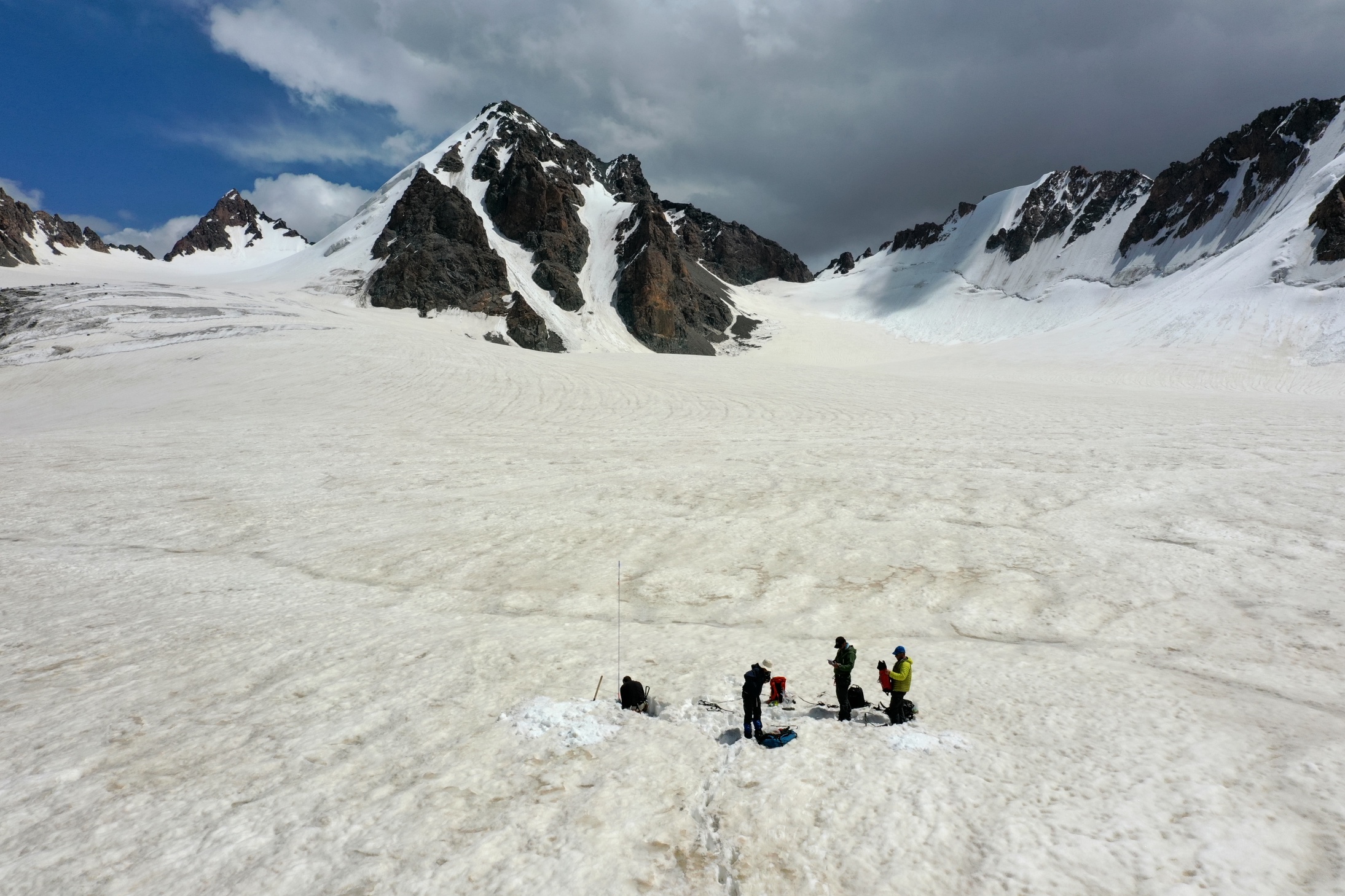The COVID-19 pandemic has resulted in surprisingly positive side effects in the environment. Observations made now during these exceptional times may offer lessons for the kind of world that we want to construct after the pandemic has subsided. Jonas Svensson is curious how the pandemic will affect glaciers in Central Asia. Svensson’s blog post is part of the Environmental Research in the time of COVID-19 blog series, where environmental researchers talk about the effects of the pandemic.
To slow the spread of the COVID-19 pandemic governments worldwide have enforced national lockdowns (although as this is written some nations have started to relieved some of the restrictions). While the different curfews have shattered the economy and left millions of people stranded at home, it has tackled another—often abandoned problem—anthropogenic air pollution. Reductions in atmospheric particulate matter have resulted in cleaner skies in areas usually plagued by poor air quality.
Since the air pollution not only influences our skies, but also affect other parts of the environment, it raises a glacier melt relevant question: to what extent will the temporary drop in air pollution affect glacier melt this year? Particularly in High Mountain Asia.

South Asian particulate matter induce melt on its surrounding glaciers
The question stems from the fact that the high-emitting nations of China and India are in close proximity to surrounding high mountain environments. In both countries, industrial and anthropogenic activities release vast amounts of particulate matter into the atmosphere, which can be transported over to neighboring mountain glaciers. Particulate matter that is of special concern is of carbonaceous nature. These particles are generally dark and are super-efficient in absorbing sunlight. This is principally critical for white glacier surfaces, where the particles modulate the glacier’s reflective properties, leading to increased and accelerated melt.
Uzbekistan, Kyrgyzstan and Tajikistan depend on glacier meltwater
For glaciers in High Mountain Asia, this phenomenon has been suggested to be especially important, with a significant contribution to the ongoing glacier retreat coming from the snow darkening by particulate matter. For the west outstretched arm of High Mountain Asia—Central Asia—glacier loss is of special concern. The nations of Uzbekistan, Kyrgyzstan, and Tajikistan are all especially dependent on meltwater from their glaciers for their livelihoods. During periods of pronounced drought this is particularly apparent, as glacier meltwater provides relief to the societies’ water stress.
The shutdowns have cleaned the atmosphere
The COVID-19 pandemic has pressured governments to protect the health and safety of its citizens—and indirectly cleansed the atmospheres. Previously, this was an environmental issue that governments were unable to do. Regardless of the motivation, however, the favored environmental action has been the same. Whatever evidence is gathered now as a result of this unique temporary shutdown in air pollution, could be used to support a future environmental motivation if the results turn out significant. In other words, observations now may offer lessons for the kind of world that we want to build after the pandemic has subsided.
Since glacier melt is also strongly linked to temperature and precipitation, it will depend on how the rest of the glaciological year will proceed. And so ultimately, time will tell how COVID-19 affect glaciers in Central Asia.
Opinion by Jonas Svensson, a postdoctoral grantee from the Nessling foundation specializing in measuring different particles in snow and their connection to melt. Together with colleagues from Tajikistan and Kyrgyzstan, he is trying to better understand glacier and snowmelt in Central Asia.
